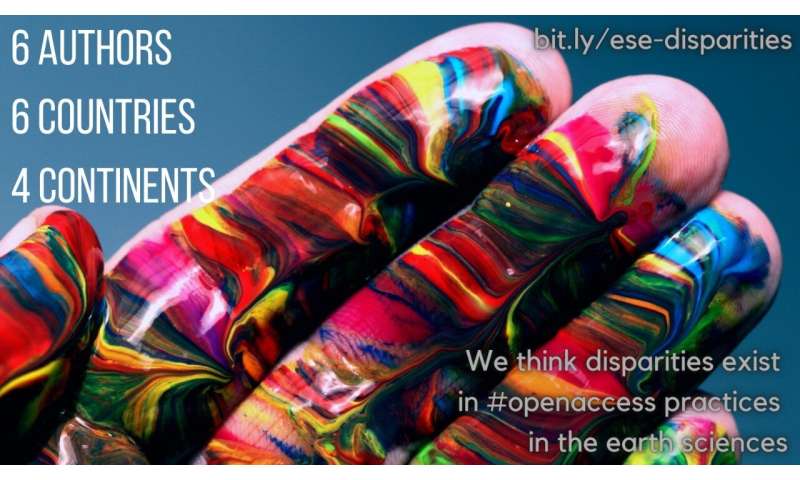Disparity in open access practices in the earth sciences

In our article just released at European Science Editing, we examine open access (OA) publication practices in earth sciences journals in six countries around the world. Until the earth sciences community decides to move away from journal-based criteria to evaluate researchers, it is likely that high author-levied publication costs will continue to maintain inequities to the disadvantage of researchers from least developed countries.
Related presentations on this topic, along with opportunities for questions & answers and exchange of ideas in chat forums shall take place at the Goldschmidt conference early July 2021.
Throughout history, the scholarly community has increasingly made various cases for wider and easier public access to published research, which in the early 2000s became known broadly as OA. Over the last two decades, scholarly publishing has undergone a major transformation, with the move to OA marking a radical shift in the financial models of major publishers.
OA publication is often conflated with the author-facing business model of article processing charges (APCs), whereby authors (or their institutions) pay a pre-specified fee to cover the publication cost. However, OA publishing was already widespread many years before the advent of APCs, which became popular as OA publishing became increasingly commercialized. Critically, the majority of journals also have self-archiving policies that allow authors to share their peer reviewed work in parallel via "green" OA routes and without charge. To pursue "green" OA, numerous stable, long-term platforms are available such as institutional repositories and collaborative services. It is unfortunate that the latter is infrequently used by the geochemical community relative to the scale of the total research outputs produced, and its sustainability remains uncertain. The current APC model imposed by many journals can have deleterious effects on researchers who have no funding, especially from lower income countries.
To provide an overview of publication practices and to compare them among six countries across the world to stimulate further debate and to raise awareness about OA to facilitate decision-making on further development of OA practices in earth sciences.
The number of OA articles, their distribution among the six countries, and top ten journals publishing OA articles were identified using two databases, namely Scopus and the Web of Science, based mainly on the data for 2018.
In 2018, only 24 percent–31 percent of the total number of articles indexed by either of the databases were OA articles. Six of the top ten earth sciences journals that publish OA articles were fully OA journals and four were hybrid journals. Fully OA journals were mostly published by emerging publishers and their APCs ranged from $1000 to $2200.
The rise in OA publishing has potential implications for researchers and tends to shift article-processing charges from organizations to individuals. Until the earth sciences community decides to move away from journal-based criteria to evaluate researchers, it is likely that such high costs will continue to maintain financial inequities within this research community, especially to the disadvantage of researchers from the least developed countries. However, earth scientists, by opting for legal self- archiving of their publications, could help to promote equitable and sustainable access to, and wider dissemination of, their work.
This story is part of Science X Dialog, where researchers can report findings from their published research articles. Visit this page for information about ScienceX Dialog and how to participate.
More information:
Pourret, O., Hedding, D.W., Ibarra, D.E., Irawan, D.E., Liu, H. and Tennant, J.P. (2021) International disparities in open access practices in the Earth Sciences. European Science Editing 47, e63663. DOI: 10.3897/ese.2021.e63663
Associate Professor of Geochemistry, Head Scientific Integrity and Open Science, UniLaSalle, Beauvais, France.
My research interests include trace metal fractionation and particularly Rare Earth Elements and cobalt in low-temperature aqueous systems, from rock to water, soil and vegetation (i.e. the Critical Zone).
I advocate for Open Science, just Science done right.